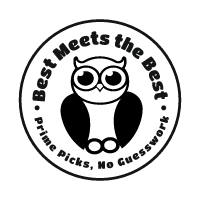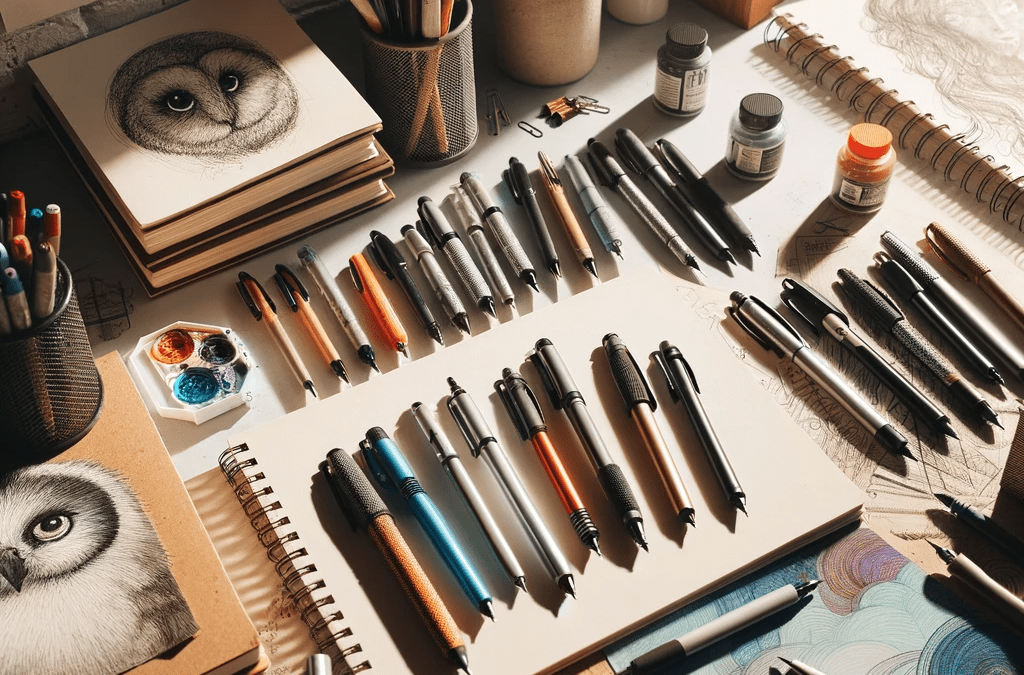Dive into the world of artistic expression with our curated list of the Top 10 Art Pens for 2023. For artists, illustrators, and creative enthusiasts, a reliable and high-quality pen is more than just a tool—it’s a partner in bringing visions to life on the canvas of their choice. Whether you’re sketching, inking, or detailing, the right pen can transform your creative experience. Our selection encompasses a range of art pens known for their precision, quality of ink, versatility, and comfort. From fine liners ideal for intricate details to brush pens perfect for fluid strokes, each pen in our list has been chosen to cater to various artistic styles and preferences. Embark on your creative journey with these top art pens, each promising to enhance your artistic workflow and elevate your final creations.
1. Sakura Pigma Micron Pens (Amazon)
- Pros: Archival quality ink, precise and consistent lines, waterproof.
- Cons: Can dry out if left uncapped, not refillable.
- Description: Sakura Pigma Micron pens are renowned for their precision and durability. They offer archival quality ink that is both waterproof and fade-resistant, making them ideal for detailed line work in illustrations and technical drawings. The range of tip sizes allows for a variety of line widths, but care must be taken to cap them after use as they can dry out. Their non-refillable nature may also be a concern for some environmentally conscious artists.
2. Faber-Castell Pitt Artist Pens (Amazon)
- Pros: High-quality pigmented ink, odorless, excellent lightfastness.
- Cons: Tips can fray with heavy use, relatively expensive.
- Description: Faber-Castell Pitt Artist Pens use high-quality pigmented ink that provides excellent lightfastness, making them suitable for works meant to last. They are odorless, acid-free, and pH neutral. The pens offer a range of nib types, including brush and calligraphy, though the tips can fray over time, especially with heavy use. Their price is a bit higher, but they are a favorite among professionals for their reliability and quality.
3. Copic Sketch Markers (Amazon)
- Pros: Refillable, replaceable nibs, blendable alcohol-based ink.
- Cons: Expensive, alcohol-based ink may bleed through paper.
- Description: Copic Sketch Markers are highly regarded in the art community, especially for illustrations and manga. They feature dual tips (chisel and brush) and are known for their blendable, alcohol-based ink. These markers are refillable, and their nibs are replaceable, making them a long-term investment. However, they are one of the more expensive options, and their ink can bleed through thinner papers.
4. Staedtler Triplus Fineliner Pens (Amazon)
- Pros: Ergonomic triangular shape, DRY SAFE feature, water-based ink.
- Cons: Not ideal for heavy sketching, limited color intensity.
- Description: Staedtler Triplus Fineliner Pens are designed for comfort, featuring an ergonomic triangular shape. They come with a DRY SAFE feature, meaning they can be left uncapped for days without drying out. The water-based ink is washable from most textiles. While they offer a fine tip for precision, they might not be the best for heavy sketching, and some users may find the colors less intense compared to other brands.
5. Uni Pin Fineliner Drawing Pens (Amazon)
- Pros: Water-resistant and fade-proof, smooth ink flow, consistent line quality.
- Cons: Non-refillable, less suitable for coloring.
- Description: Uni Pin Fineliner pens are known for their smooth ink flow and consistent line quality. They are water-resistant and fade-proof, making them great for line work in sketches and technical drawings. The pens are not refillable, however, and while excellent for detailed work, they are less suitable for broader coloring applications.
6. Pentel Arts Pocket Brush Pen (Amazon)
- Pros: Flexible brush tip, refillable cartridges, rich black ink.
- Cons: Requires practice to master, limited to one color.
- Description: The Pentel Arts Pocket Brush Pen is a favorite for its flexible brush tip that allows for a variety of line widths. The pen uses refillable cartridges of rich, black ink, ideal for brush lettering, calligraphy, and sketching. However, mastering its use can take some practice, and it is limited to black ink.
7. Prismacolor Premier Illustration Markers (Amazon)
- Pros: Fine tips for detailed work, archival quality ink, non-toxic.
- Cons: Can dry out quickly, not as blendable.
- Description: Prismacolor Premier Illustration Markers are perfect for precise, detailed work. They offer fine tips and archival quality, acid-free ink. These markers are non-toxic, making them safe for all ages. However, they can dry out more quickly than some other brands and are not ideal for blending.
8. Tombow Dual Brush Pens (Amazon)
- Pros: Dual tips (brush and fine point), blendable, non-toxic.
- Cons: Brush tip can fray, not waterproof.
- Description: Tombow Dual Brush Pens are versatile, with a flexible brush tip on one end and a fine point on the other. They are known for their blendable, water-based ink, making them a favorite for watercolor-style applications and lettering. The brush tip can fray with time, and the ink is not waterproof.
9. Sharpie Permanent Markers, Fine Point (Amazon)
- Pros: Permanent on most surfaces, vibrant colors, widely available.
- Cons: Can bleed through paper, strong odor.
- Description: Sharpie Permanent Markers are known for their bold, vibrant colors and the ability to write on most surfaces. They are widely available and affordable. However, they can bleed through paper and have a strong odor, which might be an issue for indoor use or for those sensitive to smells.
10. Rotring Isograph Technical Drawing Pen (Amazon)
- Pros: Precision for technical drawing, refillable ink reservoir, durable.
- Cons: Requires regular maintenance, higher initial cost.
- Description: The Rotring Isograph is designed for precision and durability, ideal for technical drawings and fine detailing. It features a refillable ink reservoir and a range of nib sizes. While it offers excellent precision, it requires regular maintenance and cleaning, and the initial cost is higher than disposable pens.
As we conclude our guide to the Top 10 Art Pens of 2023, it’s clear that each pen offers a unique set of features to suit different artistic needs. From the precision required in technical drawings to the versatility needed in brush lettering and calligraphy, the right pen can make a significant difference in the quality and enjoyment of your work. While selecting the perfect art pen, consider factors like ink quality, nib durability, comfort, and your specific artistic style. Remember, a good art pen is not just a purchase; it’s an investment in your artistry, providing the means to bring your creative visions to life with clarity and style. May these pens inspire you to create art that resonates, captivates, and fulfills your artistic ambitions.











